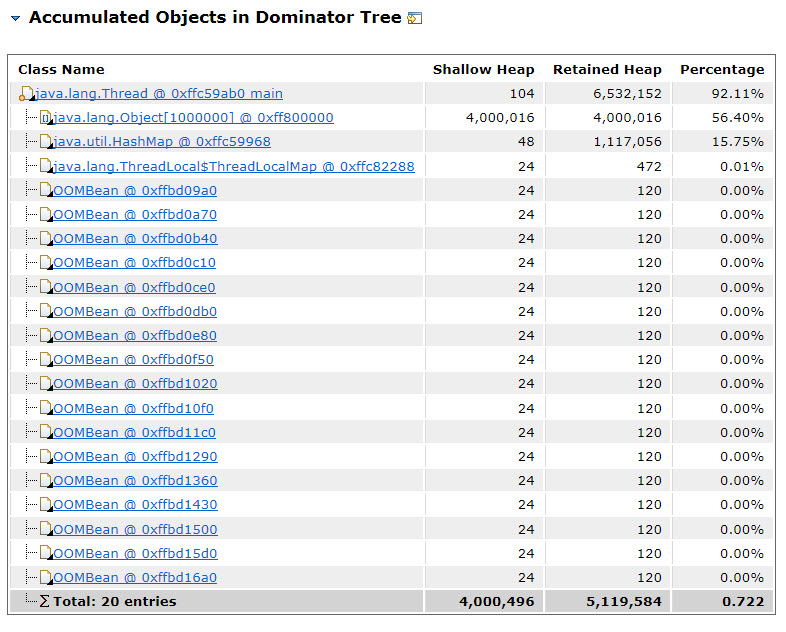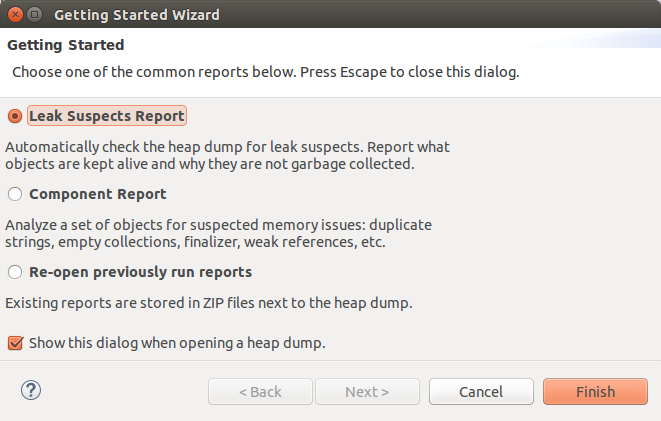
VisualVM waits for license confirmation - make sure you haven't overlooked the License Agreement dialog.The download is broken - make sure you've got the correct bits (archive managers typically notify you when the archive is broken).
 VisualVM doesn't start: there are several problems which could prevent VisualVM from starting without any obvious reason:. Check out the Getting Started document, it's designed to help you start using VisualVM. You may provide additional options to define JDK and/or VisualVM user directory: Visualvm\bin\visualvm.exe or visualvm/bin/visualvm Start VisualVM by invoking the binary appropriate for your OS:. The archive already contains the top-level visualvm directory. Remember that a Map can't contain duplicate keys: void givenMap_whenEqualsAndHashCodeNotOverridden_thenMemoryLeak() 4. If collections or large objects are declared as static, then they remain in the memory throughout the lifetime of the application, thus blocking vital memory that could otherwise be used elsewhere. So we need to pay very close attention to our usage of static variables. But this time, after we leave the populateList() method, all the memory of the list is garbage collected because we don't have any reference to it. The first part until the debug point is almost the same as what we obtained in the case of static. However, if we just drop the keyword static in line number 2 of the above program, then it'll bring a drastic change to the memory usage, as shown in this Visual VM response: If we analyze the Heap memory during this program execution, then we'll see that between debug points 1 and 2, the heap memory increased as expected.īut when we leave the populateList() method at the debug point 3, the heap memory isn't yet garbage collected, as we can see in this VisualVM response:
VisualVM doesn't start: there are several problems which could prevent VisualVM from starting without any obvious reason:. Check out the Getting Started document, it's designed to help you start using VisualVM. You may provide additional options to define JDK and/or VisualVM user directory: Visualvm\bin\visualvm.exe or visualvm/bin/visualvm Start VisualVM by invoking the binary appropriate for your OS:. The archive already contains the top-level visualvm directory. Remember that a Map can't contain duplicate keys: void givenMap_whenEqualsAndHashCodeNotOverridden_thenMemoryLeak() 4. If collections or large objects are declared as static, then they remain in the memory throughout the lifetime of the application, thus blocking vital memory that could otherwise be used elsewhere. So we need to pay very close attention to our usage of static variables. But this time, after we leave the populateList() method, all the memory of the list is garbage collected because we don't have any reference to it. The first part until the debug point is almost the same as what we obtained in the case of static. However, if we just drop the keyword static in line number 2 of the above program, then it'll bring a drastic change to the memory usage, as shown in this Visual VM response: If we analyze the Heap memory during this program execution, then we'll see that between debug points 1 and 2, the heap memory increased as expected.īut when we leave the populateList() method at the debug point 3, the heap memory isn't yet garbage collected, as we can see in this VisualVM response: 
Public static List list = new ArrayList()






 0 kommentar(er)
0 kommentar(er)
